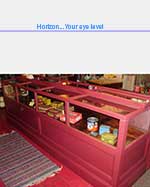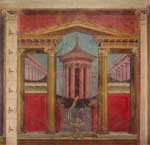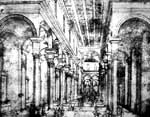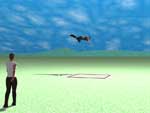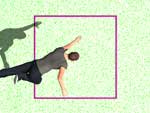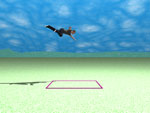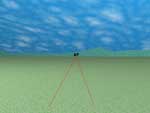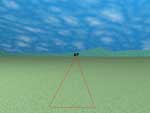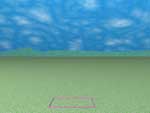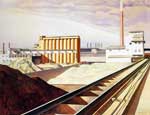Space
Early methods of indicating space or depth on a flat surface:
- Relative Size
- Overlapping
- Location on the picture plane
- Location along a diagonal
- Detail
- Gradation of Density
- Fractional Representation
- Interpenetration of planes
- Transparency
Perspective
The Horizon Line
The horizon line is the apparent line that separates earth from sky.
| The horizon line is the same as the landscape's horizon; however, most of the time hills, trees, buildings and other objects obscure the horizon. | ||
 |
 |
 |
| Usually the horizon is not visible indoors, but there is still a theoretical horizon line. | |
 |
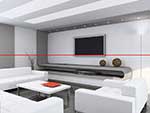 |
The horizon, when your eyes are at 5' , is about 2 3/4 miles away from the you.
If you were 100' above the ground, the horizon would be about 12 miles away.
Linear perspective
Linear perspective refers to the illusion that objects appear to become smaller as they get further away...
and that parallel lines are represented as converging toward a "vanishing point" ...so as to give the illusion of depth and distance.
Vanishing points are points that are frequently located on the horizon line where parallel lines seem to converge.
The vanishing point (v.p.) is on the horizon line when an object has parallel lines that are on the ground or are parallel to the ground.
 |
 |
When the object's planes are inclined, the vanishing points can be above or below the horizon line.
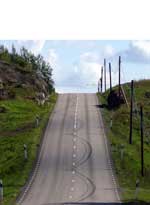 |
 |
| The ancient Greeks and Romans used partial linear perspective, as shown in their murals and pottery. | |
 Greek Pottery Greek Pottery |
|
|
Roman Fresco |
Roman Fresco |
Filippo Brunelleschi, Ca 1425, (re)discovered and refined linear perspective and used it in his archtectural drawings. The first written information about linear perspective was formulated in 1435 by the Renaissance polymath, Leon Battista Alberti.
|
|
One Point Linear PerspectiveThere are three kinds of lines used in one-point/single-point linear perspective:
|
|
 |
 |
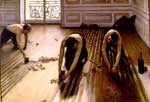 Caillebotte, The Floor Scrapers
Caillebotte, The Floor Scrapers
|
|
Most people can fairly accurately determine when a shape is a square. |
|
Boxes in Single-point Linear Perspective |
|
|
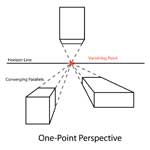 |
|
|
|
daVinci, The Last Supper |
|
|
Charles Sheeler |
Jans Vermeer, Street in Delft
|
Assignments

